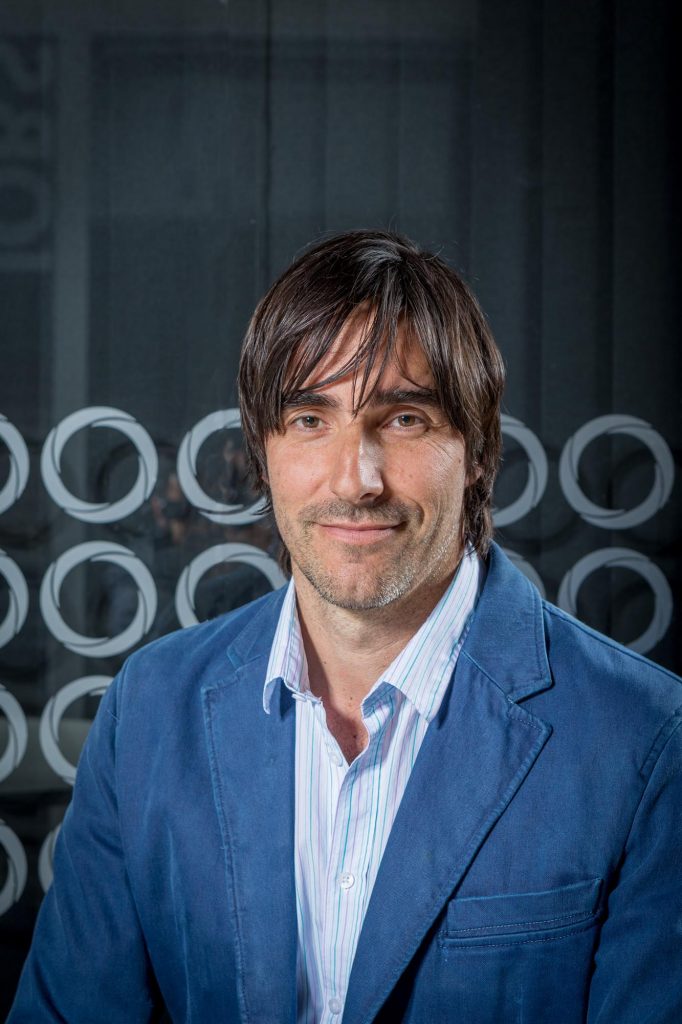Case study: ATB Brightside – shining a light on digital banking
From Edmonton, Alberta to London England is a little over four thousand miles. When it comes to banking innovation the distance might be measured in just a few years, and that’s what motivated ATB Financial to explore creating an all-digital, mobile-first bank – ATB Brightside. London’s move toward open banking spurred ATB to think digital.
“At ATB, we’re constantly surveying the industry to keep track of what’s happening and where it’s going,“ says Curtis Stange, president and CEO at ATB Financial.
“Several years ago, we saw a shift in international markets. We noticed the growth of challenger brands and recognised quickly that they were going to be a game changer within the industry. We made the strategic decision to explore the possibility of launching our own challenger banking initiative. We knew then that it would give us an opportunity to reinvent our operating model and enhance our digital capabilities.”
ATB Financial, the largest Alberta-based financial institution with $54.9 billion in assets, was created by Premier William Aberhart in 1938 to give Albertans an alternative source of credit coming out of the Great Depression. It became a Crown corporation in 1997 and now has more than 5,500 employees, more than 760,000 customers and 175 branches plus 144 agencies.
Its innovation strategy started about three years ago, said Wellington Holbrook, chief transformation officer at ATB and was prompted by the rise of challenger banks in the UK.
Although new digital banks are rising in markets around the world. the most immediate model was the UK where regulators are pushing for greater competition in banking.
“We saw what was happening in the UK with the emergence of a proliferation of challenger banks starting to change the landscape,” Holbrook says. “Canada was slower to see some of that happen – the regulatory regime here is a little more conservative – but we expect it to become more UK-like and thought it was important to get ahead of that.”
The innovation group surveyed new banks to see what made an effective strategy to stand up a financial institution today.
“We chose key people from our organisation covering marketing, product experience and design, strategy, as well as research,” says Stange.
Drawing on the best bankers across ATB didn’t work so well, says Holbrook.
“Guess what? A lot of their ideas looked too much like banking of the past, so we got a lot of non-bankers into the design process. We think that helps us come up with different feeling solutions. When we look at design in Canada and the UK, it typically comes down to low friction low cost. We want low friction, low cost but with lot of value, and the value is beautifully simple.”
Simple isn’t always easy.
“Early on we over-thought it. Product design has to be simple.”
Stange says ATB set the team up in their own incubator space, away from the daily business to allow them to dream big and then zero-in on execution.
It also partnered with PWC to scour the globe for the right digital core banking system, eventually looking at 160.
“We were surprised at how many systems were available; there was almost a system for any type of bank,’’ says Holbrook.
Some were very simple which promised fast deployment, but they were rigid which could lead to problems in the future. Others were robust and traditional which might comfort traditional bankers, but didn’t look promising for cloud deployment. Eventually they got down to half a dozen and chose Technisys, based in Argentina.
“It offered a high degree of flexibility and enabled us to customize the value proposition and customer experience in non-traditional ways,” Holbrook says. “And they were already in production with a bank in Brazil which had over one million customers.”
The Brightside team wanted ability to scale, ability to be flexible to support different product types, and openness to new standards, like open banking, that Holbrook expects will come to Canada.
A lot of technology vendors could satisfy at a basic level but not a lot globally could offer flexibility to offer, for example, something that went beyond the basics in savings, he added. ATB implemented SAP for core banking more than a decade ago, but they knew that wasn’t the right platform for the new banking entity.
The team wasn’t too concerned about working with a company based in Latin America.
“From where we live everything is far away, the advantage is their time zone (Argentina) isn’t too far. With SAP we are dealing with Germany and a seven to eight hour difference. Technisys is just two or three hours from Alberta and their leadership has done everything they can to make it convenient. They have a team in Calgary and a bigger squad back in Argentina and other locations.”
ATB was looking for new ways to reach underserved households, Holbrook says, hard-working families that are just make ends meet.
“They are at best marginally profitable for the traditional financial institutions, mostly because of costly legacy overhead, so they don’t get a lot of attention from banks. ATB looked at how to bend the cost curve to make them profitable. We saw a pretty significant market and felt we could reasonably expect to onboard hundreds of thousand customers in two or three years by providing a great experience.”
Stange says the team did a lot of research including a lot of time talking with customers. The result was surprising, adds Holbrook.
“We approached it with the idea that banking is broken and how could we fix it.”
After testing ideas with potential customers the team had a change of thinking.
“Our finding is that banking isn’t broken’, the customer experience is broken. We are taking all the grit out of the customer experience and providing delightful experiences that are unexpected in traditional banking. We will have savings products, lending designed to be easy, and innovative products with unexpected twists that will drive benefits.”
Some with be familiar, like rounding up purchases to divert the extra funds into savings.
“But we have a few novel approaches to make that experience special.”
The firm has only recently started enrolling some trial users, so he is keeping quiet about some of the clever new features lined up.
The interaction with customers will be entirely digital. They can sign up online in a minute using identity authentication by Trulioo, the Canadian identity firm.
In addition to its digital connections, ATB Brightside will have occasional pop-up branches for sales promotions, perhaps at a mall during holidays or at a weekend festival.
It will provide advice, but advice that looks more like a what you get from a digital company than from a bank.
“We help you set savings goals that don’t feel like savings,” he says. “We have designed a simple multi-faceted way to save pennies, nickels or dimes in ways that don’t have friction. Some is still in final user testing; they are fairly complex solutions that are simple to use.”
Rather than segment in traditional ways, the team developed three personas, starting with “overworked worriers” who are making their finances work, but just barely.
“A lot of families in our part of the country would be in that group,” says Holbrook, “middle class or barely middle class. Then the younger urbanites, young professionals building their careers and perhaps spending beyond their means and aren’t interested in convenience of traditional banking. The third would fit traditional demographic, but have grown up in today’s world where they expect the digital experience they are getting through GAFA (Google, Amazon, Facebook, Apple) companies.”
ATB sees a tipping point where online banking is dropping off and mobile is increasing. Brightside will be mobile first.
“The experience sings on mobile.”
Technisys brought some features it had developed in other countries, especially strong security, Holbrook says.
“In some countries you have to be really good at security systems to keep customers safe. They had a lot of out-of-the-box solutions that exceed our expectations, helped us enhance customer experience, such as painless authentication for customers, and they had, certain products focused on lower income households and offered new ways to solve problems.”
Brightside will also use other vendors including Plaid for connectivity to third party solutions, Zendesk for customer service and Mixpanel for detailed customer analytics that shows what a customer clicked on, how long they spend on a page, what they read and what they don’t, says Holbrook.
Banking ahead of its time
Technisys got started more than 20 years ago, said its co-founder and CEO Miguel Santos who got into fintech working in the financial division of IBM Argentina right before founding Technisys with Adrián Iglesias, COO and German Pugliese Bassi, CMO.
“We went through several waves of technology and had actually started to create a product for internet banking back in the day, so the mission has not changed. We probably were ahead of our time by ten or 15 years… other than that, the vision was correct.”
The company was doing internet banking before Microsoft created Internet Explorer. Its first client, Deutsche Bank in Argentina, launched with Netscape as its browser.
Technisys now offers two platforms. One is a wrapper of sorts that it sells to traditional banks to provide an interface to a digital front end. This allows a bank to create a digital experience for their customers in a very fast, effective way that can differentiate them from their competitors.
The second platform was built from scratch for digital banks and is natively open, which allows banks to use it to create new services and integrate services from other financial firms or fintechs.
It has five pure play digital clients that run the full spec of digital banking technology from the core to the customer interface.
“Brightside is full spec; we helped them with the core and omni-channel digital,” Santos says.
“All of our solutions are cloud-based, completely stateless and can scale linearly with users/workload because we are thinking about disrupting the Brazilian ecosystem, or even the US. Big banks will need tools that let them actually replace the mainframe ecosystem and be able to scale. We have a core that we tested up to 40 million customers for a particular Brazilian bank,” he adds.
“Our architecture is based on a composition paradigm. It can create increasingly more complex processes using a scalable execution machine where the actual processes and financial products are outside and agnostic. In that way Bank A could be totally different from Bank B because processes and financial products are exposed through dynamic open APIs. You can create new products in a matter of days as compared to weeks or months with older technology.
“The Brightside guys are aligned with our thinking. We think that to compete in the next 20 years the financial services companies, the new banks will have to differentiate not only on UX and the experience layer, but also will have to be digital from the core. We provide exactly that with the possibility to create new products in days. We offer the ability to come and orchestrate simpler services, not more complex products.”
In the next few years the digital experience will be the differentiator — what makes a customer decide to choose one bank over another, Santos adds.
“The ability to create these experiences from the core to the very end of the experience through an API or an interaction with Alexa, that is part of the unique differentiator.”
Sidecar banks
Rip and replace mainframe projects are a long-term game, says Santos, being either diplomatic or optimistic – after all, banks have held onto their mainframes far past their projected lifetimes and show little inclination to move onto newer platforms.
“We are being careful with projects,” he explains. “We’re mostly engaging with customers that choose a path of building a completely new banks, sometimes called sidecar banks or challenger banks, funded by the mothership. The plan is to build a new bank with a new management team, a new culture, new technology and new capabilities. The bank can migrate their existing user base to a new bank – that is an approach we have seen more and more. We have also been engaging with banks that are creating new digital lines of business within the existing bank, with the idea of a long term migration of their customer base.”
Those approaches are more popular than core replacement, he says.
“We are creating a platform where a new bank can be running in a matter of weeks.”
By Tom Groenfeldt
This article is also published in the in the May 2019 issue of the Banking Technology magazine.
Click here (or on the image below) to read the digital edition – it is free! 















































